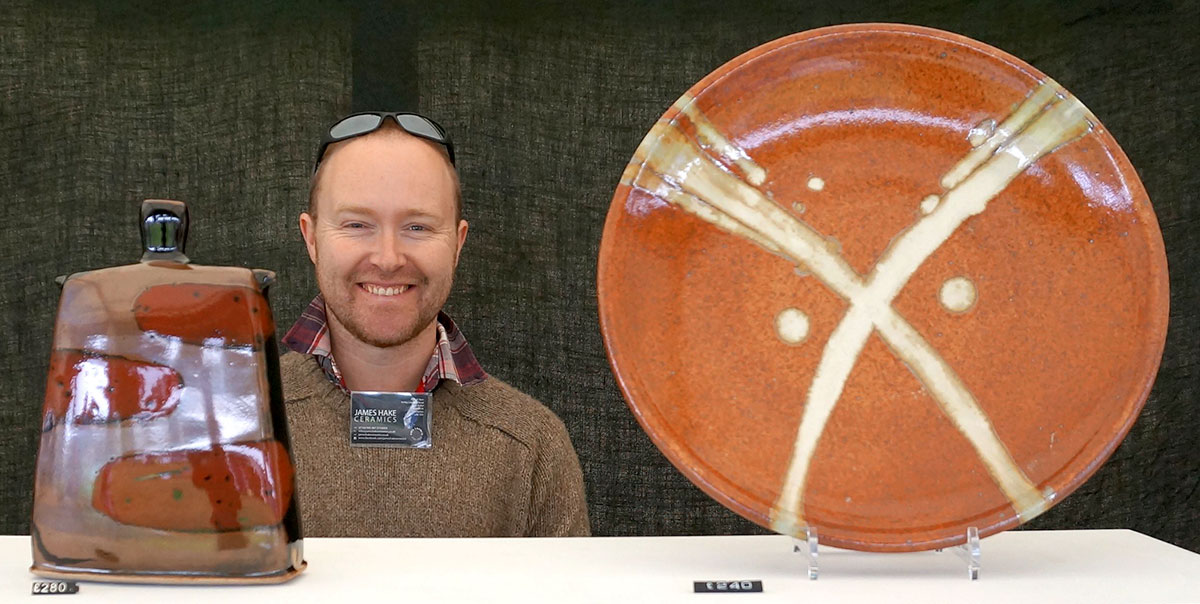James Hake – Ceramic Artist

James is a ceramic artist based in the north west of England.
After studying design at Manchester Metropolitan University James trained in ceramics near Kilkenny in Ireland where the disciplined focus on technique gave him the tools and space to discover his individual style.
It was following a visit to an exhibition at the Lake District’s Arts and Crafts House Blackwell in 2001 that his interest in Japanese ceramics took hold. The exhibition also featured work by the English potter Edward Hughes (1953–2006) who’s work has remained constant reference point throughout James’ career.
James established his studio, a converted barn in rural north Lancashire, more than a decade ago.
In addition to his previous work as a visiting lecturer at MMU, he has exhibited his work in places from the Stratford Gallery to Ceramic Art London.
Today James’ work combines simplicity of form with thick experimental glazes and a preference for locally-sourced materials.
James Hake is one of a younger generation of potters who have been exploring the Anglo-Oriental aesthetic in a markedly individual way. For example his jars and bottles, thrown and slab-built, are very much of his own conception. With their characteristic leans, lugs and narrow necks, they carry locally derived glazes of great generosity and depth. He decorates broadly, abstractly dipping and pouring across surfaces, glazes that fuse and merge, adding their own motion and energy. They have a sort of liquid movement that keeps his work perennially fresh.
James is a potter of economy, interested in the continuous potential of a small number of essential materials, but giving them full expressive rein. His pots evoke something of the Lakeland landscape where he lives and works, its mineral spirit, and his Shinos, copper-reds, tenmokus and ashes draw much from a sense of connection with this region, its temperate colours, its textures and bedrock. These are pots that have their own weather, a feeling of the ground from which they derive.
I have a particular admiration for his crisply worked faceted jugs with their freely expressive detailing, and the power of his large dishes and chargers with their gestural glazing. These objects show just how richly contemporary potters can add to the language of clay with their own intelligent response to material and form.
David Whiting
